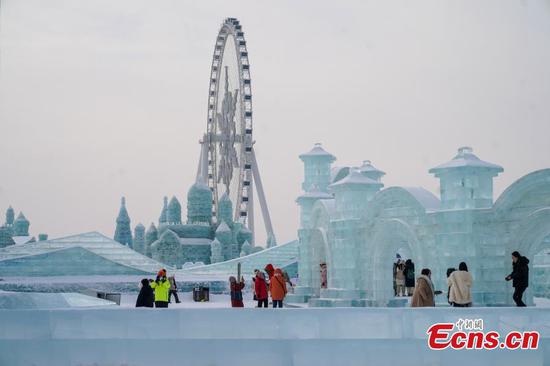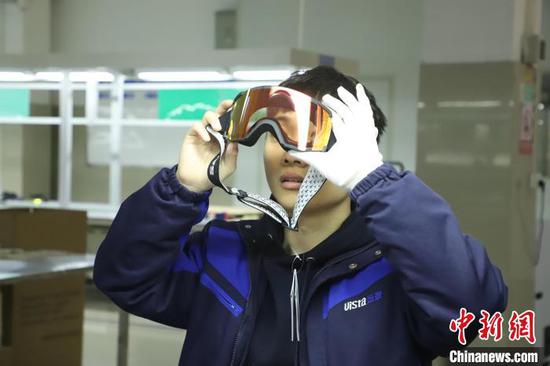Source:Ecns.cn 2024-01-19
(ECNS)-- Northwest China's Harbin City in Heilongjiang Province has become a sought-after tourist destination this winter.
A report released by travel platforms indicates that the tourism boom in Harbin is expected to expand and continue through the winter break and the Chinese New Year holiday, boosting the catering, accommodation, transportation sectors and more.
Ice and snow-related tourism soaring
In recent years, people's interest in ice and snow sports has been growing steadily. The impact of the Beijing Winter Olympics continues to expand, laying the foundation for thriving winter tourism, possibly making it the most prosperous in the past five years.

Tourists enjoy themselves in the Harbin Ice and Snow World in northeast China's Heilongjiang Province, Jan. 4, 2024. (Photo: China News Service/Zhao Yuhang)
With the surge in ice and snow tourism, there is a significant increase in bookings for ski trips and hot springs.
Data from Meituan and Dianping showed that since November 2023, group purchasing orders for skiing tickets have soared over 780 percent compared to 2019, with attention high for popular skiing destinations in Xinjiang Uyghur Autonomous Region, Heilongjiang, Jilin, Liaoning and Hebei provinces.
Orders for hot spring consumption nationwide rose over 11 times compared to the same period last year, data from Douyin showed.
Bathing centers have also become popular destinations for tourists who visit Northeast China.
During the New Year holiday, bookings for bathing centers increased by 180 percent year-on-year, with cities like Shenyang, Harbin, and Changchun outpacing the national growth rate, according to data from Meituan and Dianping.
A report on the development of China's ice and snow industry in 2023 predicted that during the 2024-2025 winter season, the number of people engaged in ice and snow tourism in China is expected to reach 520 million, with revenue reaching 720 billion yuan (about $100 billion).
Winter sports-related consumption growing
With the rise of tourism in Harbin, many people from South China are asking about what to wear when visiting Harbin.
Traveler Xiaoqian (pseudonym), who had been to Harbin, said the lowest temperature in the city was close to minus 30 degrees Celsius, emphasizing the need to seriously consider the cold weather.
In the past month, consumers in South China have increased their purchases of down jackets, according to the head of e-commerce office of Douyin.
Compared to the same period last year, consumers in Chongqing and Fujian who purchased down jackets on Douyin e-commerce increased to 530 percent and 497 percent, respectively. Consumers in Guangdong, Hainan, and Zhejiang also purchased three times more down jackets compared to the same period last year.
"There are around 200 workers in our workshop. In approximately 10 days, we will be completing 30,000 pairs of ski goggles," said Zhang Daozeng, head of a sports production company in Taizhou, Zhejiang Province.

An inspector at a sports factory checks the quality of ski goggles. (Photo/China News Service)
Zhang noted that traditionally, October to the Chinese New Year is the off-season for sports production. However, this year is much different, as orders are booked until March.
He anticipated a growth of over 60 percent in output for 2024 compared to 2023, with ski goggles production expected to reach one million pairs.
Number of businesses related to ice and snow tourism surges
The "China Ice and Snow Tourism Development Report (2024)" indicates that the total investment in ice and snow tourism infrastructure projects across China hit approximately 602.2 billion yuan in 2023.
By the end of 2023, the number of ice and snow tourism-related businesses nationwide surpassed 12,000.
Tourism departments across China also seized the opportunity to promote "ice and snow plus cultural tourism," making the sector a new growth source for developing cultural tourism.
Sun Qi, a professor at Harbin University of Commerce, suggests that while optimizing ice and snow tourism products, it is essential to deeply integrate elements such as culture, animation, fashion, technology, and sports.